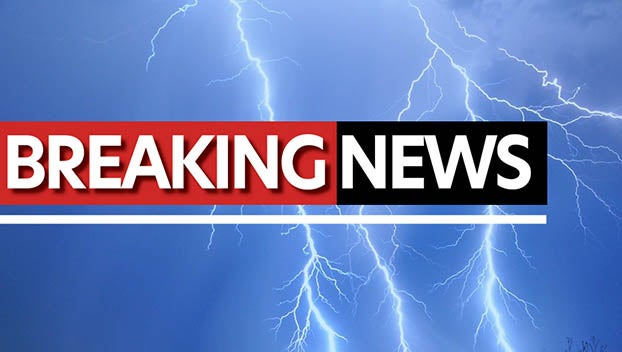US virus cases near an all-time high as governors backtrack
Published 3:32 pm Thursday, June 25, 2020
|
Getting your Trinity Audio player ready...
|
By JENNIFER PELTZ and CARLA K. JOHNSON
Associated Press
NEW YORK (AP) — The number of new coronavirus cases reported per day in the U.S. stood at more than 34,000 Thursday, just short of the all-time high reached in late April during some of the darkest and deadliest days of the crisis.
While greatly expanded testing probably accounts for some of the increase, experts say other measures indicate the virus is making a comeback. Daily deaths, hospitalizations and the percentage of tests that are coming back positive have also have been rising over the past few weeks in parts of the country, mostly in the South and West.
Amid the disturbing new signs, Texas Gov. Greg Abbott, who has pursued one of the most aggressive reopening schedules in the nation, began to backtrack. And Nevada’s governor ordered the wearing of face masks in public, Las Vegas casinos included.
The U.S. recorded 34,500 COVID-19 cases Wednesday, slightly fewer than the day before but still near the high of 36,400 reached on April 24, according to a count kept by Johns Hopkins University. The daily average has climbed by more than 50% over the past two weeks, according to an Associated Press analysis.
Whether the rise in cases translates into an equally dire surge in deaths across the U.S. overall will depend on a number of factors, experts said, most crucially whether government officials make the right decisions. Deaths per day in the U.S. number around 600 after peaking at about 2,200 in mid-April.
“It is possible, if we play our cards badly and make a lot of mistakes, to get back to that level. But if we are smart, there’s no reason to get to 2,200 deaths a day,” said Dr. Ashish Jha, director of Harvard’s Global Health Institute.
But he warned: “We have consistently underestimated this virus.”
In the past few weeks, the nation’s daily death toll has actually dropped markedly even as cases climbed, a phenomenon that may reflect the advent of treatments, better efforts to prevent infections at nursing homes, and a rising proportion of cases among younger adults, who are more likely than their elders to survive a bout with COVID-19.
Several states set single-day case records this week, including Arizona, California, Mississippi, Nevada, Texas and Oklahoma.
The U.S. has greatly ramped up testing in the past few months, and it is now presumably finding many less-serious cases that would have gone undetected earlier in the outbreak, when the availability of testing was limited and sicker people were often given priority.
But there are other more clear-cut warning signs, including a rising number of deaths per day in states such as Arizona and Alabama. Some states, including North and South Carolina, also broke hospitalization records.
As cases grow, some states are imposing new restrictions only weeks after lifting shutdowns.
In Texas, Abbott reimposed a ban on elective surgery in the biggest counties to preserve hospital space after the number of patients statewide more than doubled in two weeks. Several Houston hospitals said they are adding beds.
Abbott also put on hold any further reopenings.
“The last thing we want to do as a state is go backwards and close down businesses,” the Republican said. “This temporary pause will help our state corral the spread.”
Nevada, which reported its biggest-ever increase in daily cases Thursday, joined a number of other states in instituting mask requirements in recent days.
“For Nevada to stay safe and stay open, we must make face coverings a routine part of our daily life,” Democratic Gov. Steve Sisolak said.
Some businesses are also backing off reopening. Disney delayed its mid-July reopening of Disneyland until California gives further guidance.
As politicians try to strike a balance between public health and the economy, the government reported that the number of Americans applying for unemployment benefits last week declined slightly to 1.48 million, indicating layoffs are slowing but are still painfully high.
The virus has been blamed for over 122,000 U.S. deaths — the world’s highest toll — and more than 2.3 million confirmed infections nationwide.
European nations appear on track to reopen their shared borders by July 1, and the European Union is considering barring American visitors, given the flare-up in the U.S. and President Donald Trump’s ban on Europeans entering the United States.
In Paris, the Eiffel Tower reopened to visitors for the first time after its longest-ever peacetime closure: 104 days.
“It’s very special, very special” because of the relative lack of tourists, said Annelies Bouwhuis, a 43-year-old visitor from the Netherlands.
Skyscraper-studded Dubai, in the United Arab Emirates, ended a monthslong nightly curfew.
With hospitals overwhelmed in New Delhi, Indian troops provided care at medical wards fashioned from railroad cars. And door-to-door testing is starting in Melbourne, Australia, to control a hot spot there.
In China, where the virus first appeared late last year, an outbreak in Beijing appeared to have been brought under control. China reported 19 new cases nationwide amid mass testing in the capital.
Worldwide, over 9.4 million people have been confirmed infected, and nearly a half-million have died, by Johns Hopkins’ count. Experts say the true infection numbers are much higher, in part because of limited testing.
“Globally, it’s still getting worse,” World Health Organization chief Tedros Adhanom Ghebreyesus said.



